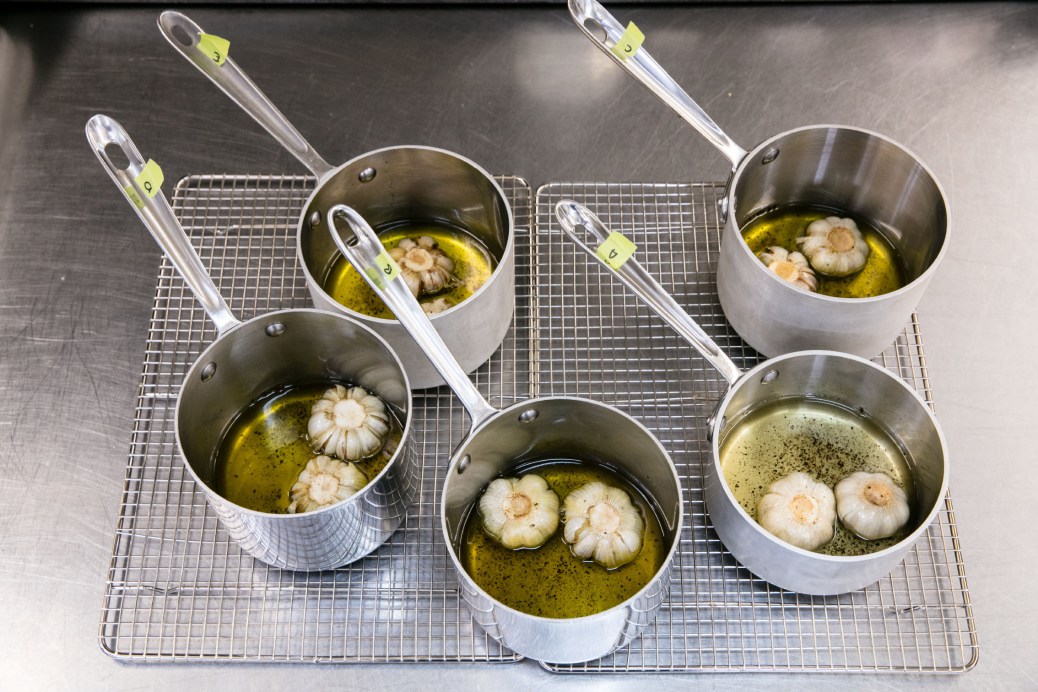Striking Oil
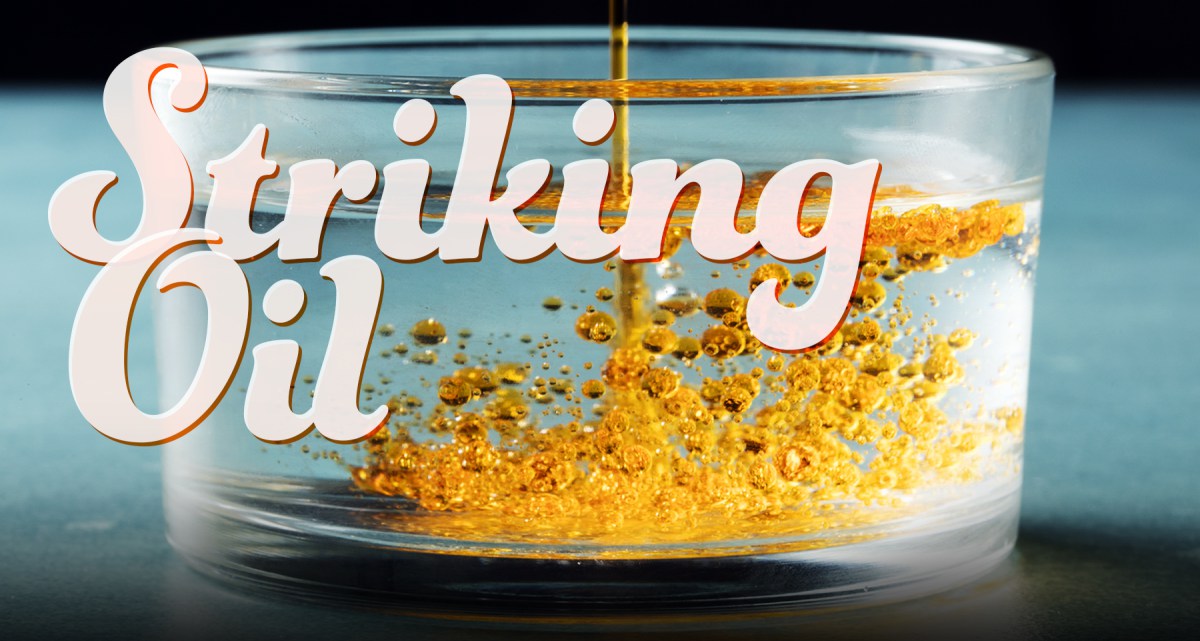
01
The Lipid Burlesque
Three minutes’ drive east from the Sixt rent-a-car, I passed the last Denny’s Puerto Rico had to offer. A few thousand feet after that, I passed the island’s easternmost Marriott. It took a total of seven minutes for the manicured boulevards of eastern San Juan to narrow to a raucous, lane-and-a-half asphalt catwalk. This breezy strip of Route 187 was slathered in sand, shaded by coastal pines, and perfumed with the most delicious smoke I have ever smelled. With very little foreplay, the northeastern coast of Puerto Rico had dropped me into kiosko country.
Kioskos, Spanish for “kiosks,” are tiny food stands that cling to Puerto Rican coastal highways. They offer menus of just three to five dishes built to bludgeon your sun- and sea-addled tongue after a long day at the beach. Like their spiritual sisters the chiringuitos in Spain, kioskos specialize in beachside alcohol and live-fire cooking. That doesn’t just mean grilled meats. In fact, I came here for the frituras, the kind of fried food that seems insulated against the trend swells of the rest of the food world. While a lot of us spent the late ’90s equating unabashed enjoyment of fatty frying with watching porn in public, kiosko cooks continued to thoughtfully perfect the art of the tasteful lipid burlesque.
In a grassy gap between pines and palms, I found about thirty cars jigsawed around the source of that delicious smoke: Kiosko El Bebe. A hand-painted sign heralded three things: arroz con jueyes (rice fried in crab fat), alcapurrias (taro and green banana fritters stuffed with every conceivable source of ground meat), and bacalaito (salt cod cakes). Behind a wooden counter lined with chest coolers full of beer and coconuts, three women fanned and fed a wood fire that was more blacksmith’s forge than grill. Everything that came out of that kitchen was shatteringly crisp, perfectly seasoned, and surprisingly light, but the bacalaito inhabited another plane of existence. A crispy salt cod chip the size of a dinner plate is obviously going to be good, but this thing had complexity and depth to rival an LSD-era Beatles song. After chatting with the owner, I found that the secret wasn’t in the batter, nor even in the innate flavor of the coconut oil, but rather the process both went through in that smoky forge. She said simply, “Al aceite le agregamos el sabor de la parilla” (we give the oil the flavor of the grill).
The women at Kiosko El Bebe cook in hammered cauldrons full of coconut oil and hung precariously over a blistering fire, which captures and exploits the heady aromas of the burning logs. In those fragrant crucibles, they endow a simple mixture of salt cod, flour, and water with the smokey goodness of Texas barbecue brisket. I’ve fried a lot of tasty stuff, but this was a reminder that oil can do a lot more for food than just make it hot and crispy.
02
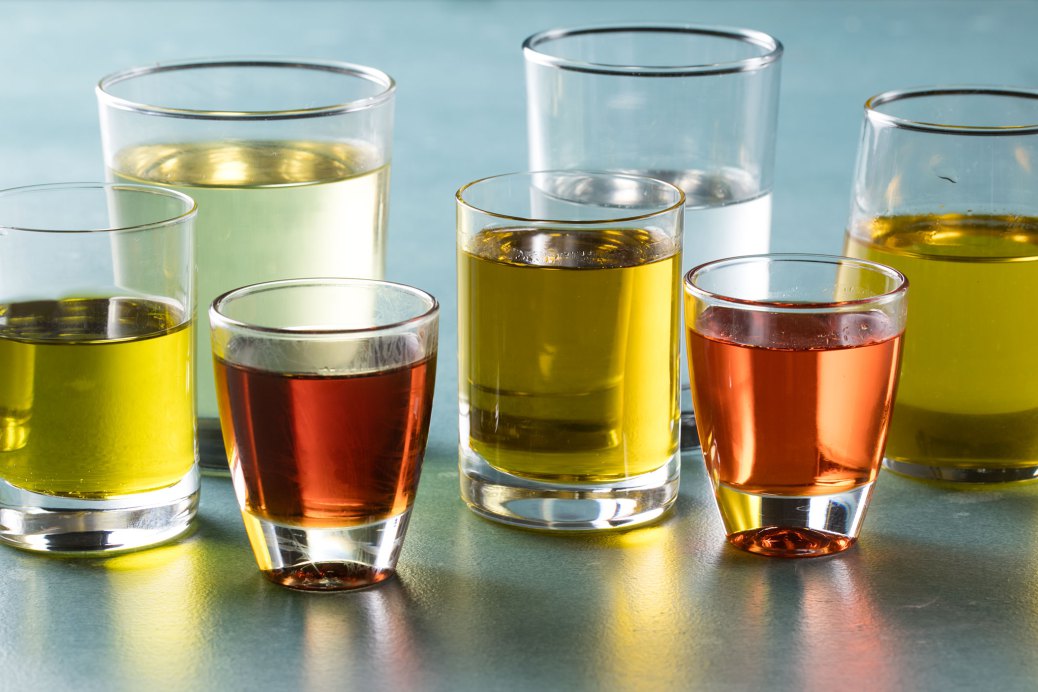
What is Oil, Anyway?
Culinary oils are lipids, a family of molecules that also includes the wax in a honeycomb and the cholesterol in an egg. Lipids are characterized by a prickly-at-best relationship with water, and fats and oils—specifically the triglycerides of which they’re made—are among the most water-hating molecules in existence.
Triglycerides are squid-shaped molecules consisting of three fatty acids extending like tentacles from a glycerol head. Fatty acids, the building blocks of fats, can vary in length and are either saturated (rigid, straight chains of carbon atoms completely covered with hydrogen) or unsaturated (bent chains, with some empty spots at the hydrogen table). Saturated fatty acids can be tightly packed together, giving rise to denser fats that melt at higher temperatures compared with the unsaturated fatty acids found in most oils (generally speaking, we use the word “oils” to refer to lipids that are liquid at room temperature while “fats” refers to solid ones). Saturation also has a lot of bearing on how sturdy fats and oils are and how their flavor changes over time.
All triglycerides despise water. On its own, glycerol (aka glycerine) itself loves water; it’s probably the moisture-retaining ingredient in your favorite hand lotion. Left to their own devices, fatty acids can also manage a cordial relationship with water, straddling borders between fat and water as emulsifiers. When glycerol and three fatty acids huddle together to form a triglyceride, however, the water-compatible parts of all parties involved get hidden inside, and all friendliness toward water disappears. The hatred between triglycerides and water borders on cosmically intense. Even in the face of the fundamental laws of entropy that push all substances to mix, triglycerides inevitably find ways to separate from water and congregate in fatty globs. Emulsions are an affront to the natural rhythm of the universe, so don’t take it personally if your homemade mayo breaks into an oil slick.
Their persnickety relationship with water aside, globs of triglycerides—that is to say, fats—are one of our greatest allies in the quest for flavor. Saliva, which is made of water, acts like a gatekeeper to our taste buds, allowing us to taste only what water can dissolve, like sweet sugars, salty minerals, and savory amino acids. Since fats can’t slip past the saliva barrier, they’re virtually tasteless, but tasting sweet, salty, sour, and so forth with the tongue is only part of flavor. The aromas we experience while we eat are equally if not more important.
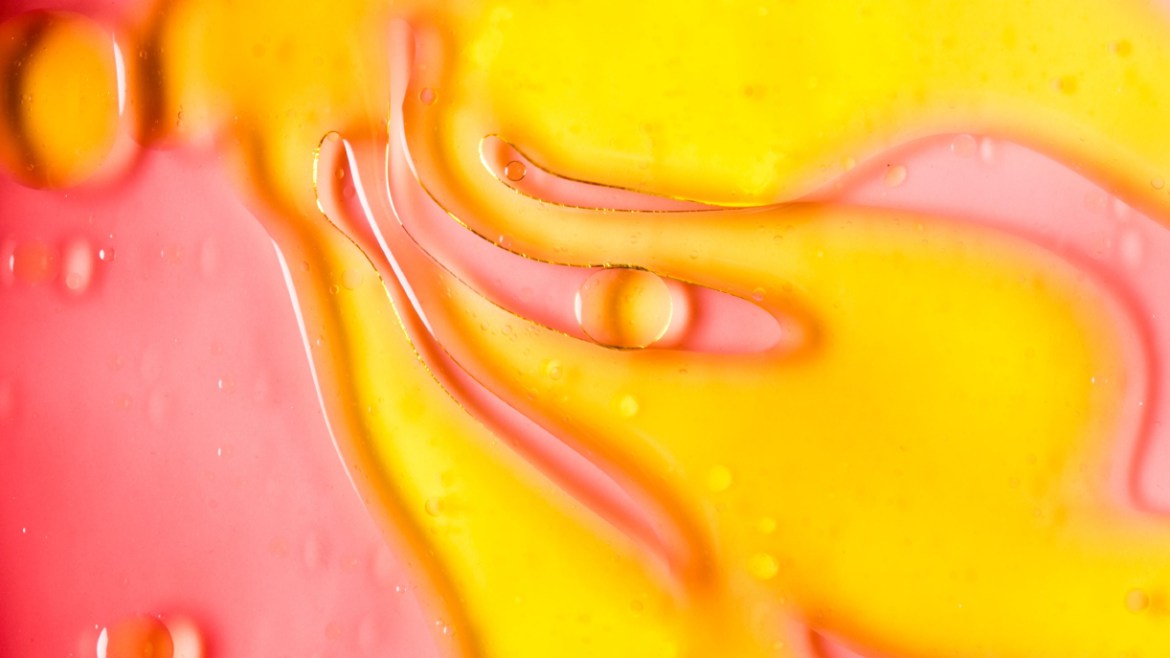
Many of the grassy, fruity, nutty, cheesy, spicy, and funky aromas that we love in food won’t dissolve in water; instead, they insist on dissolving in fat. The presence of oil in food gives those aromas a place to live, allowing cooks to capture the fullness of flavor, whether steeping vanilla and citrus zest in cream for a dessert or allowing the wood smoke that envelops a cauldron to permeate the frying coconut oil. Excluding fat from our food leaves these aromas homeless, which is why an unctuous, creamy ramen broth carries the aromas of garlic and toasted sesame so much better than a lean consommé.
Another reason we need oils for cooking is that they can take a beating from heat and keep on going. At its boiling point, water evaporates and escapes into the air, taking heat energy with it, so there’s a limit on how hot we can get a pot of water. Compared with tiny, volatile water molecules, triglycerides in oil are massive and virtually flightless. They require so much energy to go airborne that they stick around, getting hotter and hotter until they literally catch fire and/or decompose. If we stop short of that point and fry food around 300 to 390 degrees Fahrenheit/150 to 200 degrees Celsius, the oil works as a high-powered thermal cannon to blast the surface of our food with blistering heat.
When food gets thrown into a fryer, it becomes enveloped in a roiling froth as water on its surface violently and quickly evaporates. Once the bubbles subside, the surface of the food hardens to a dry crust while caramelization and Maillard browning render sugars and proteins into a delicious spectrum of toasty flavors and brown pigments. Over time, the fryer oil itself starts to show signs of wear and tear, breaking down and forming smaller molecules that contribute their own characteristic nutty, cheesy, and occasionally fishy nuances to the flavor of fried food.
While those volatile flavor molecules make their way into the food (and the air), nonvolatile fragments left behind act like emulsifiers, allowing fryer oil to cozy up closer to food for a more even cook and deeper golden brown. For that reason, most oils will start churning out the best results not fresh out of the bottle (or the nut) but after a couple of rounds of frying. Some cooks inoculate each fresh batch of oil they use by adding a small amount (roughly 10 percent) of aroma- and emulsifier-laden oil saved from a previous fry. But eventually, all oils transition from golden and fragrant to dark, burnt, and rancid-smelling, as more and more of the triglycerides break down, inspiring the old cook’s adage: “It doesn’t matter if you’re cooking French fries or foie, you go home smelling the same.”
03
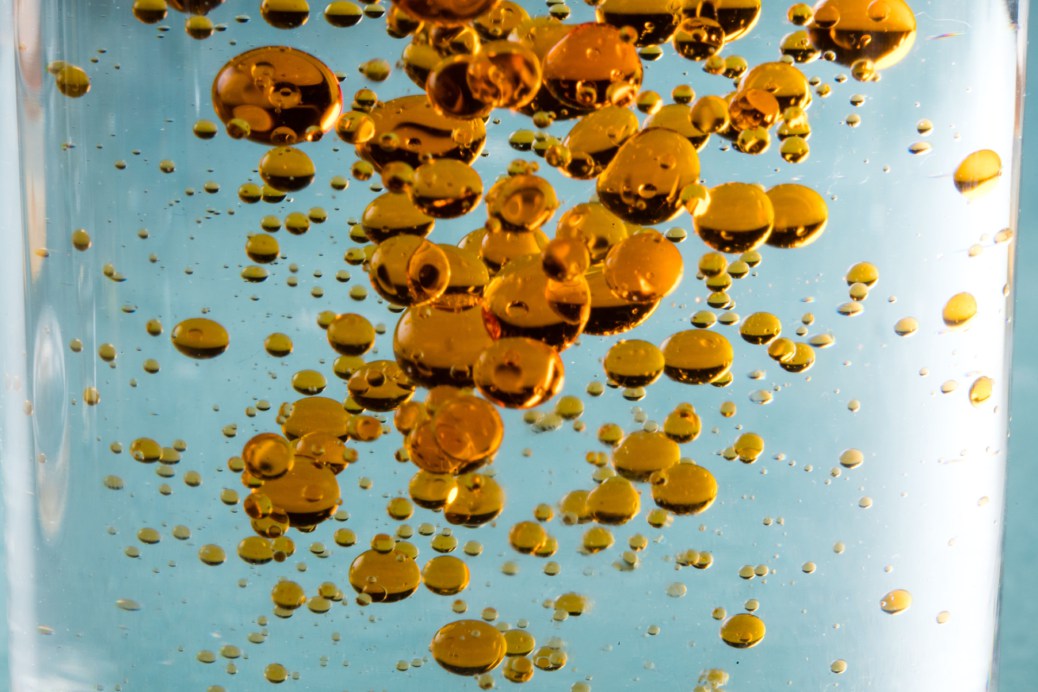
Pressing Questions and Refined Answers
In a darkened amphitheater on the sunny campus of the UC Davis Olive Center, I spent a fascinating day tasting extra virgin olive oils and learned that the complex flavor profiles of EVOOs are as fussed over as wine. With a dozen other tasters, I was trained to dissect a diverse spectrum of aromas. We waded through banana, artichoke, and grass in search of potential quality defects—everything from musty mold to the aroma of blue cheese—all while meditating on how heat from overzealous pressing of the olives could throw the whole thing out the window by either destroying flavorful compounds or ejecting them into the air before they could be bottled.
Like hibernating mammals, some plants store lipids for a time of need. The entire purpose of a coconut or an olive is to one day create another coconut palm or olive tree, so they stockpile calorie-dense oil to fuel the would-be seedling’s journey skyward. Coconuts and most other lipid-rich plants lock their oil away in tightly packed globules wrapped in a protective layer of protein emulsifiers. Olives are reckless by comparison, storing their triglycerides in fragile, flimsy cellular compartments that burst easily when the fruit is pressed.
We would never have even uttered the term extra-virgin if olives weren’t so careless with their oil. No heat is required to get these naked oil droplets to coalesce and separate. Over the course of ripening, harvest, grinding, and pressing, the natural breakdown of lipids and other cellular building blocks by enzymes and oxygen packs olive oil full of fragrant bits and pieces. Because what’s needed to get at the most exquisite, aromatic oil is just a gentle press at room temperature—any warmer and the flavors start to change—proud producers trumpet the distinction between extra-virgin (the highest grade of mechanically pressed oil) and lesser squeezings from the same olive. In contrast, nearly every other type of edible oil requires some heat or intense extraction method to be palatable or financially feasible, and even the gentlest of those treatments damages some of the natural fragrance. Extra-virgin corn oil? Not going to happen.
The tedious care taken to prepare the most delicately flavored plant oils, like EVOO and virgin coconut and hazelnut oils, makes them better suited to use as condiments than as cooking oils, not just because the process makes them awfully expensive to use a quart at a time, but also because all those fragile, carefully curated aromas break down fast and become a flammable liability when the heat is on. The job of cooking medium should be left to sturdier, less nuanced refined oils.
Extra-virgin or not, here’s what matters for cooking oil. The saturation of the oil matters—triglycerides with short, saturated fatty acids are sturdier and will last statistically longer in a fryer before degrading than long, unsaturated fatty acids—but purity is a more imminent issue. Unrefined oils, like extra-virgin olive oil, carry proteins, sugars, and fragments of other molecules that give them their delicious character, but that go up in smoke when they’re heated to frying temperatures.The refining processes that strip those impurities away will render even olive oil a sturdy option for searing a steak, but most restaurants rely on refined grapeseed, safflower, soybean, or rice bran oils as go-to fats. Separated from their own flavors, even refined oils can be taken in dozens of different flavorful directions, picking up and conveying aromatics like loyal workhorses.
Although refinement of plant oils is thus usually a conversation about prioritizing stability over aroma, our culinary history with animal fats suggests we can have both. Apart from a slight gaminess, most commercially available animal fats, like rendered lard or beef tallow, are pretty mild to begin with. If I’m going to use animal fat, however, I want to get bang for my buck.
Rendered bacon fat, toasted bone marrow, roasted chicken schmaltz, and clarified ghee deliver deep, dark, robust aromas that have been forged and tested in a crucible of fire, so they offer dynamic flavor intrigue with better staying power than the floral notes that are delicately preserved in virgin plant oils by cold pressing. If these flavored animal fats are properly strained to remove any protein or sugar that would otherwise burn, they can generally stand up to heat just as well as refined plant oils.
After seeing what can happen on a beach with some logs and a cauldron of coconut oil, I realized there is no reason we can’t apply these animalistic techniques to plant fats. As a proof of concept, I made a quick substitute for clarified browned butter using oil and almonds. Just add some almond flour to neutral-flavored oil (about a tablespoon per cup of oil) and heat gently in a pan until the almond solids slowly turn brown. Once the oil has been infused with their nutty brownness, pour the mixture through a coffee filter to separate the infused oil from the solids. Use it for anything from grilled cheese sandwiches to fried eggs; the solids make a great topping for yogurt or ice cream.
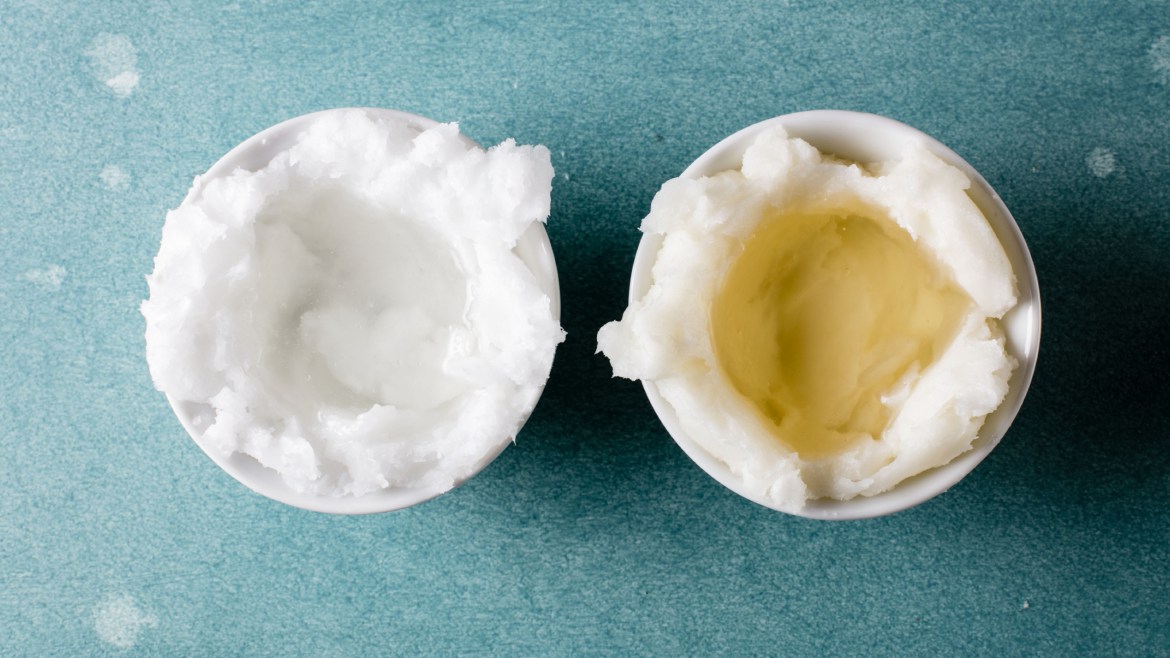
Another fatty revelation came to me about three miles down the road from Kiosko El Bebe, in the form of a braided rope with a bunch of Bacardi bottles hanging from it, like the Caribbean version of a Tuscan garlic bundle. The bottles, hanging from the awning of a large fruit stand, were filled with pure, white coconut oil. I looked toward the back of the store, expecting to see a burly industrial pressing machine, but all I saw was a lanky teenage kid. I asked about the oil, and he said they “just dry them, grate them, and squeeze them,” pointing to a hand-operated press the size of a Keurig.
Coconuts will give up their oil to any cook capable of breaking an emulsion (which is all of us). Coconut oil droplets are naturally packaged in cages of protein emulsifiers and gummy carbs. Cooks all over the world have developed dozens of strategies for breaking coconut oil out of its creamy prison, starting from either fresh or dried coconut.
The dry method used by the roadside stand I visited requires drying coconut pulp to less than 10 percent water content prior to pressing. The water in fresh coconut keeps the oil droplets suspended in their protein cages, but, like aged cheddar weeping fat on a burger, dried coconut doesn’t contain enough water to keep individual fat droplets apart. Without water, fat droplets cast their emulsifier bodyguards aside and merge together, releasing clear coconut oil rather than creamy, emulsified coconut milk when pressed.
The quickest way to make coconut oil at home is with fresh coconut meat. Grating and squeezing fresh coconut pulp yields an intact emulsion of creamy coconut milk. Then, gently simmering the strained milk denatures the protein coating around each droplet, banishing coagulated clumps to the bottom of the pot. The scene resembles clarified butter—a distinct layer of clear oil on top, with murky, solids-laden water below.
Over decades of trying to minimize fats in the kitchen, many important nuances of the unique powers of cooking with oil got lost in the shuffle. Let’s acknowledge that fat is an indispensable, multipurpose culinary tool: a delicate perfume, a heavy-duty heat conductor, and a roomy duffel bag for storing and delivering vast amounts of diverse flavor. Not every sauce needs to be rich with olive oil, nor does deep frying need to become an every-meal affair, but when we do indulge, we should take inspiration from the ingenuity of cooks who can use fat in smart ways to cram soul-satisfying delight into six bites of smoky, crispy fish.
The question of which oil to use in a particular culinary application is an important one, and there are many choices out there. Here’s our breakdown of the most common plant-based cooking oils and suggestions for how to use them in your kitchen:
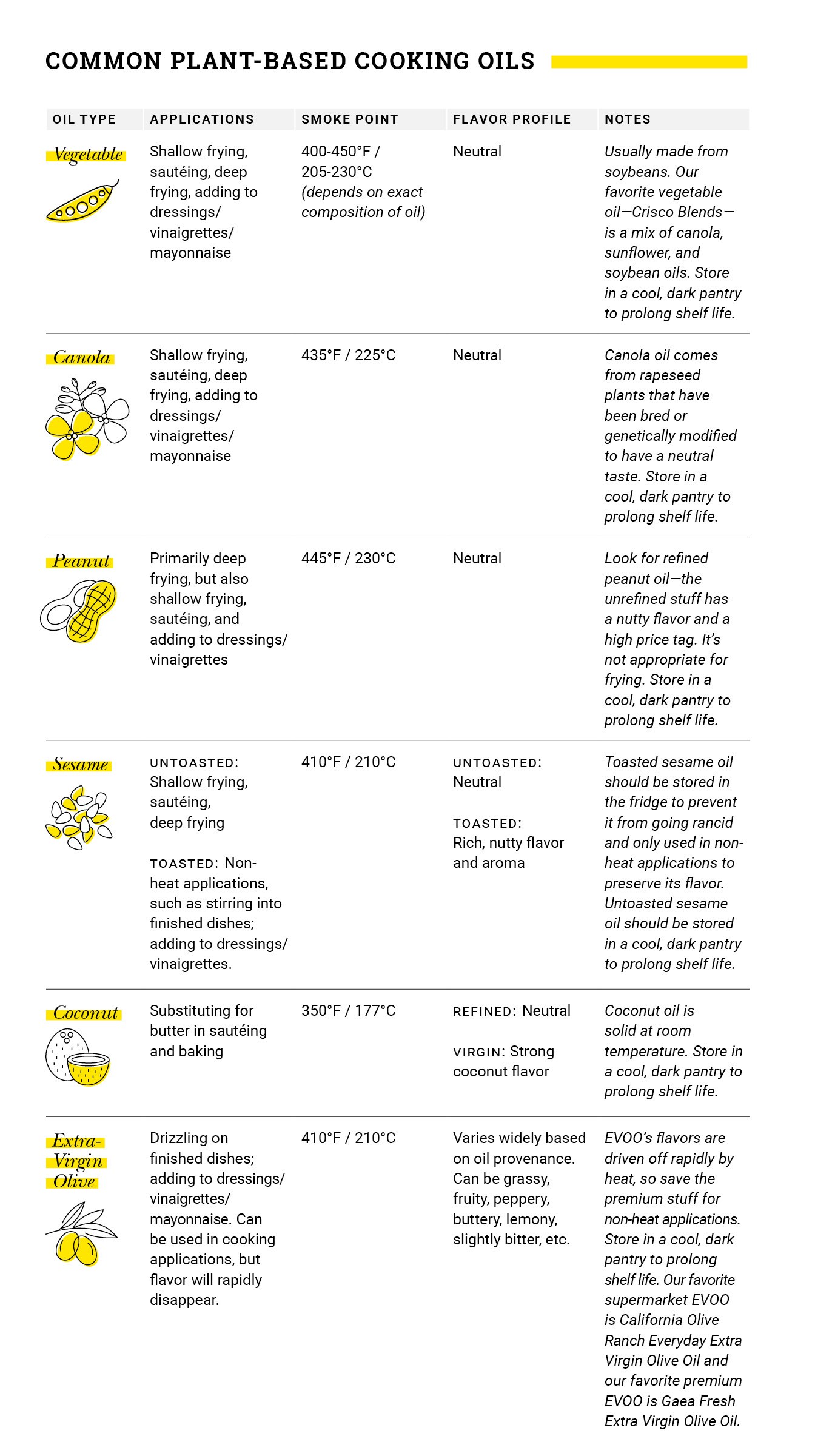
04

Back to the Test Kitchen
[Ed note: Ali Bouzari, while writing about oils, met with associate editor Tim Chin and test cook Sasha Marx and discussed fats’ vast recipe potential. The following is from Sasha’s perspective.]
After talking about the variety and potential of oil with Ali, Tim and I were eager to get into the test kitchen. The recipes that we ended up developing show off the versatility of plant oils, using them in both savory and sweet applications. My recipes fall on the savory end of the spectrum and include a versatile dressing and an easy weeknight dinner you’ll want to add to your rotation ASAP. Both recipes focus on the ways in which oil can be used to pick up and hold onto fat-soluble aromas during cooking.

Creamy Oil–Roasted Garlic Dressing
This dressing uses a hybrid roasting-confit method for whole garlic heads, which are cooked in a generous amount of olive oil in a hot (375 degree Fahrenheit/191 degree Celsius) oven. Traditional confit cooking—in which foods are submerged in fat and cooked at a low temperature for a long period of time—is done at a much lower temperature, usually around 250 degrees Fahrenheit/121 degrees Celsius. With this technique, we get the best of both worlds: the garlic cloves become soft, sweet, and nutty, while also infusing the olive oil with allium aroma. All of that garlicky goodness gets incorporated into a smooth dressing: The cloves are first blended with water, white wine vinegar for acidity, and a little tahini and miso for nuttiness and umami. The aromatic garlic oil is then streamed into the blender to form a smooth, creamy emulsion that can stand in for Caesar dressing any day. I only realized after the fact that I had inadvertently hit vegan gold. Unintentional veganism is something that I can get behind. (Should we make #unintentionallyvegan a thing?) We love this dressing tossed with a simple green salad, drizzled on roasted broccoli or sweet potatoes, or spooned onto grilled chicken or fish. I brought some home that I had left over from our recipe photo shoot, and used it to dress up some Italian cold cut sandwiches. You don’t have to keep it vegan . . .

Spaghetti Aglio e Olio with Shrimp
Our second savory recipe is a riff on a classic Italian pasta dish, and a Hall of Fame weeknight pantry–Hail Mary dinner, Spaghetti Aglio e Olio. Keeping with tradition, I slowly bloom garlic and red pepper flakes in olive oil, before tossing cooked spaghetti and parsley into the mix. In this version, I infuse the dish with deep shellfish aroma by first cooking shrimp shells in olive oil. See, shrimp shells are chock-full of flavor thanks to glutamates and free nucleotides, which create a deep, meaty umami taste and polyunsaturated fatty acids that generate fresh, delicate flavors when cooked. And I keep the infusion process pretty quick (just about 10 minutes), as those fresh flavors are volatile compounds, and we want them in the food, not swirling around in the kitchen. Once I’ve got my shrimpy oil, I strain out the shells and proceed with the garlic and chiles, finally adding the shrimp themselves for a quick and gentle cook (just say no to rubbery crustaceans!). I toss in the pasta, some parsley, and a little lemon juice for a weeknight dinner packed with a ton of flavor but just a few ingredients. Pretty slick.
Tim, the pastry guru here at Cook’s Science, focused his attention on dessert recipes. Both his Chewy Browned Coconut Butter Cookies and Olive Oil Ice Cream show how oils can be used as alternatives to dairy fats. The peppery and grassy flavor of olive oil is highlighted in its raw form in the ice cream, while coconut oil’s flavor is transformed and deepened through browning in those addictive cookies.
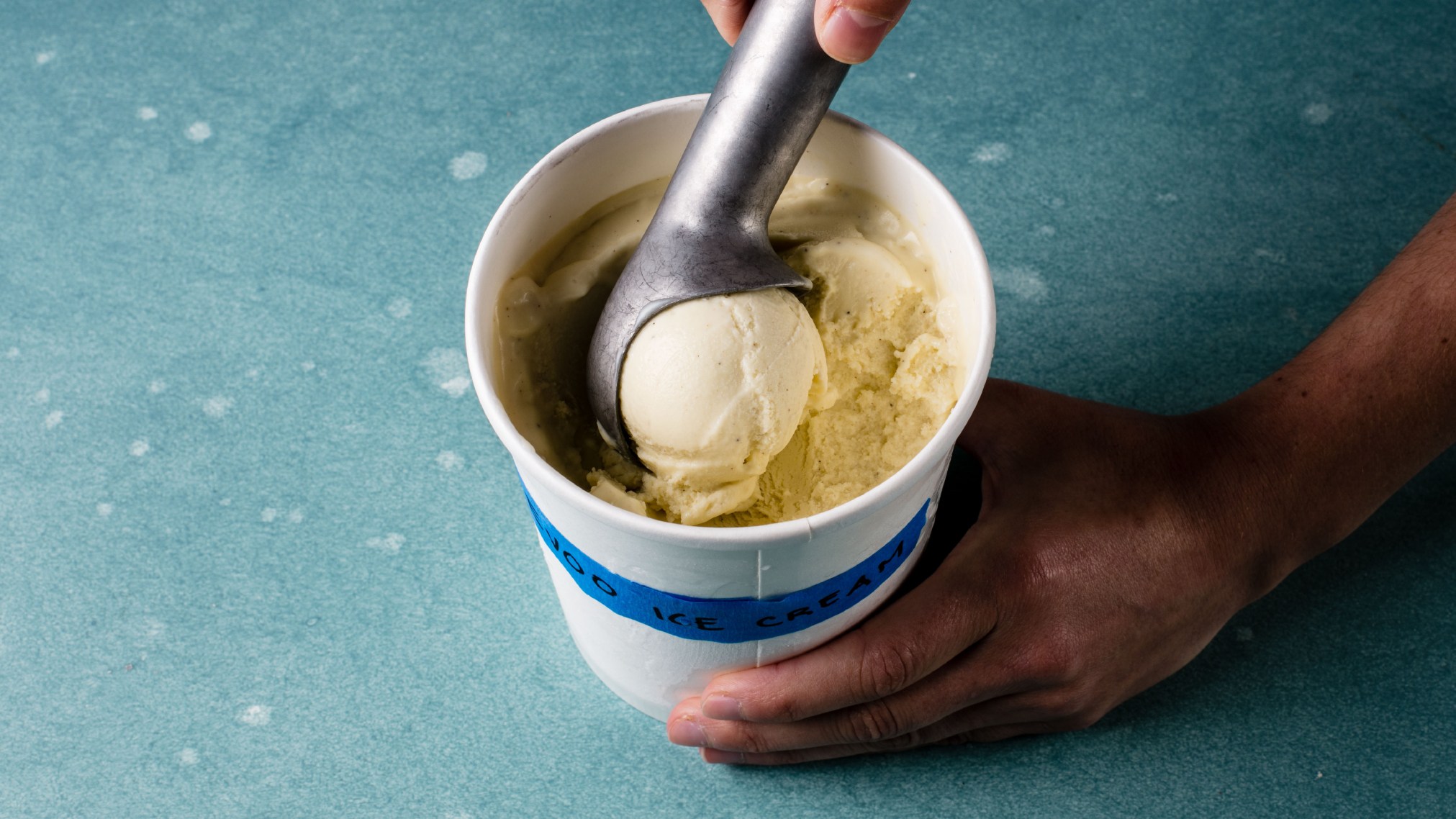
We enjoy adding savory notes to sweet foods to bring balance, complexity, and depth of flavor to desserts. Over the past year, we’ve come to realize that none of us have a big sweet tooth, and one-dimensional super-saccharine recipes just aren’t our bag. And we especially enjoy savory ingredients in ice cream (remember Seaweed Ice Cream?). Therefore it seemed logical to put a sweet spin on the classic pairing of dairy and olive oil (think mozzarella or ricotta and EVOO). Tim began his testing by tinkering with executive editor Dan Souza’s all-purpose ice cream recipe and adding olive oil. Early tests yielded batches of ice cream that had too much fat (up to 25 percent, where traditional super-premium ice cream bases do not exceed 16 percent milk fat), resulting in a chewy, greasy, and slick texture. Not what we were aiming for.
Tim incrementally replaced the heavy cream with olive oil and water in subsequent versions of the recipe until nearly all of the fat in the recipe came from oil. This took us into somewhat uncharted territory, due to some key differences between olive oil and dairy fat. Olive oil is an unsaturated fat, so it does not exhibit the same properties as milk fat (a heavily saturated fat). Also, olive oil’s fat isn’t bound in tight globules the way that milk fat is. Partial coalescence of milk fat globules through churning and freezing forms a network that traps air, giving ice cream its characteristic firm texture and slow melting property. That’s all well and good for milk fat ice creams, but in a base with so much olive oil and so little milk fat, the network doesn’t form as easily—resulting in large ice crystals and an icy, hard texture. To get around this problem, Tim added just a little more cornstarch to bind extra water, which thickened the base and helped keep the ice crystals smaller. The ice cream was able to deliver on the grassy and peppery flavors of olive oil, and Tim even gave it an added boost with a small amount of freshly ground black pepper. For this ice cream, Tim chose a premium olive oil with medium pepperiness and tons of grassy flavor. Olive oil gets its spiciness from oleocanthal, a natural phenolic compound that creates a burning sensation in the back of the throat, while black pepper contains piperine, another spicy compound. You can learn more about the science of spiciness in our feature story Hurts So Good.

Chewy Browned Coconut Butter Cookies
After talking with Ali about his experiments with clarified browned almond butter and coconut oil, we decided to marry the two ideas and make browned coconut butter. Tim experimented with a number of techniques and coconut products; he browned coconut flour in unrefined coconut oil and even made his own coconut oil by cracking open, shredding, and simmering fresh coconut. But the winning technique was actually the simplest. He found a jarred coconut “butter” made from dried coconut flesh that browns evenly when heated, yielding a smooth, aromatic, nutty brown butter, similar in texture to tahini. Using that as the fat in a simple sugar cookie allowed Tim to do away with both butter and eggs, and yielded cookies with crisp edges, a chewy interior, and solid coconut flavor. These cookies are not only delicious, but also vegan. Chew on that!
Styled Food Photography by Steve Klise.
Test Kitchen Photography by Kevin White.
Food Styling by Marie Piraino.
Art Direction by Lindsey Chandler.
Graphics by Sophie Greenspan.
05
